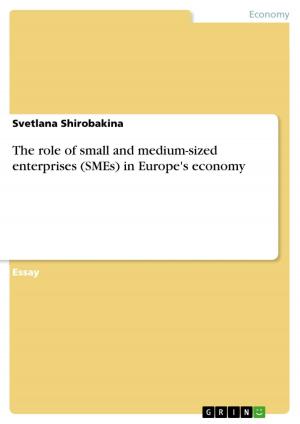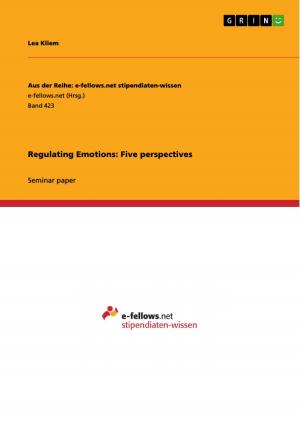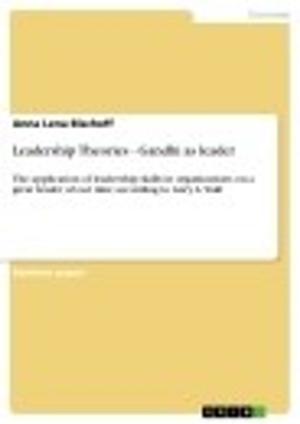IKEA Boys and Terrorists: Fight Club in the Light of 9/11
Nonfiction, Entertainment, Drama, Anthologies| Author: | Nadine Klemens | ISBN: | 9783638172233 |
| Publisher: | GRIN Publishing | Publication: | February 18, 2003 |
| Imprint: | GRIN Publishing | Language: | English |
| Author: | Nadine Klemens |
| ISBN: | 9783638172233 |
| Publisher: | GRIN Publishing |
| Publication: | February 18, 2003 |
| Imprint: | GRIN Publishing |
| Language: | English |
Seminar paper from the year 2002 in the subject American Studies - Miscellaneous, grade: 1,3 (A), Technical University of Braunschweig (English Seminar), course: 9/11, 9 entries in the bibliography, language: English, abstract: Something which was a bomb, a big bomb, has blasted my clever Njurunda coffee tables in the shape of a lime green yin and an orange yang that fit together to make a circle. [...] My Haparanda sofa group with orange slip covers, design by Erika Pekkari, it was trash, now. And I wasn't the only slave to my nesting instinct. The people I know who used to sit in the bathroom with pornography, now they sit in the bathroom with their IKEA furniture catalogue. [...] It took my whole life to buy this stuff. [...] Then you're trapped in your lovely nest, and the things you used to own, now they own you. Until I got home from the airport (Palahniuk 44 f.). As the narrator in Chuck Palahniuk's Fight Club comes home from a business trip, he realizes that his fancy IKEA nest has been blown to pieces by a bomb. The destruction of his home is the beginning of a quest for identity, a process that makes him the leader of an underground terrorist organization in the end. Fight Club gives insight to a social malaise that has gripped American men, it is the portrait of the nihilistic generation that is commonly referred to as Generation X. Palahniuk depicts the life of a man who grew up in a time without great wars, without a Great Depression. Hence, he is desperately trying to give his insignificant life a meaning since he cannot give it to a greater cause. This work discusses both Palahniuk's novel and the David Fincher movie that has been based on it with regard to what these works convey about terrorism and western culture. Furthermore, the impact of 9/11 on Fight Club is examined: how has 9/11 changed the perception of the novel and the movie?
Seminar paper from the year 2002 in the subject American Studies - Miscellaneous, grade: 1,3 (A), Technical University of Braunschweig (English Seminar), course: 9/11, 9 entries in the bibliography, language: English, abstract: Something which was a bomb, a big bomb, has blasted my clever Njurunda coffee tables in the shape of a lime green yin and an orange yang that fit together to make a circle. [...] My Haparanda sofa group with orange slip covers, design by Erika Pekkari, it was trash, now. And I wasn't the only slave to my nesting instinct. The people I know who used to sit in the bathroom with pornography, now they sit in the bathroom with their IKEA furniture catalogue. [...] It took my whole life to buy this stuff. [...] Then you're trapped in your lovely nest, and the things you used to own, now they own you. Until I got home from the airport (Palahniuk 44 f.). As the narrator in Chuck Palahniuk's Fight Club comes home from a business trip, he realizes that his fancy IKEA nest has been blown to pieces by a bomb. The destruction of his home is the beginning of a quest for identity, a process that makes him the leader of an underground terrorist organization in the end. Fight Club gives insight to a social malaise that has gripped American men, it is the portrait of the nihilistic generation that is commonly referred to as Generation X. Palahniuk depicts the life of a man who grew up in a time without great wars, without a Great Depression. Hence, he is desperately trying to give his insignificant life a meaning since he cannot give it to a greater cause. This work discusses both Palahniuk's novel and the David Fincher movie that has been based on it with regard to what these works convey about terrorism and western culture. Furthermore, the impact of 9/11 on Fight Club is examined: how has 9/11 changed the perception of the novel and the movie?















